Historic Inns of Annapolis
Introduction
Text-to-speech Audio
The Historic Inns of Annapolis is comprised of three 18th century inns in the downtown area, The Maryland Inn, Governor Calvert House, and Robert Johnson House. The oldest building, the Governor Calvert House, dates back to 1695 and is located across the street from the Maryland State House. These restored and historic boutique hotels are within walking distance of prime Chesapeake Bay attractions and offer visitors a glimpse of early American history while adding modern conveniences. The charming hotels serve as sites for weddings, banquets, and corporate functions. The Historic Inns of Annapolis is a member of the Historic Hotels of America.
Images
The Historic Inns of Annapolis
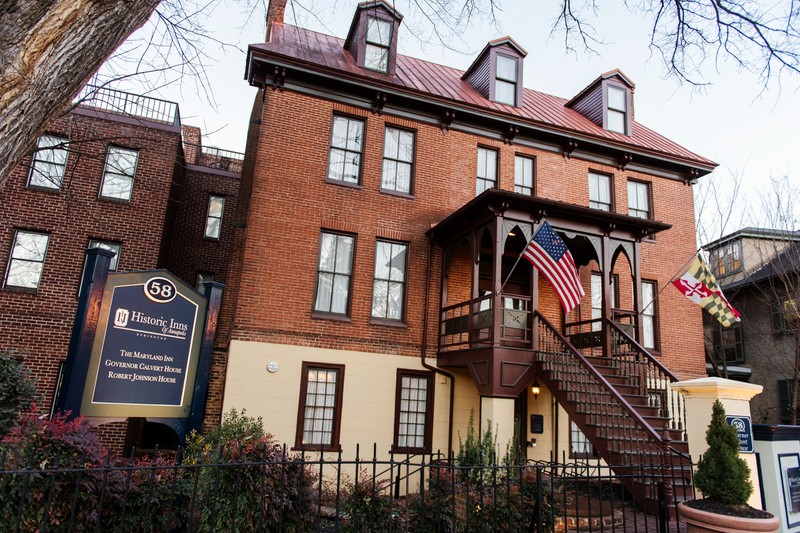
The Maryland Inn
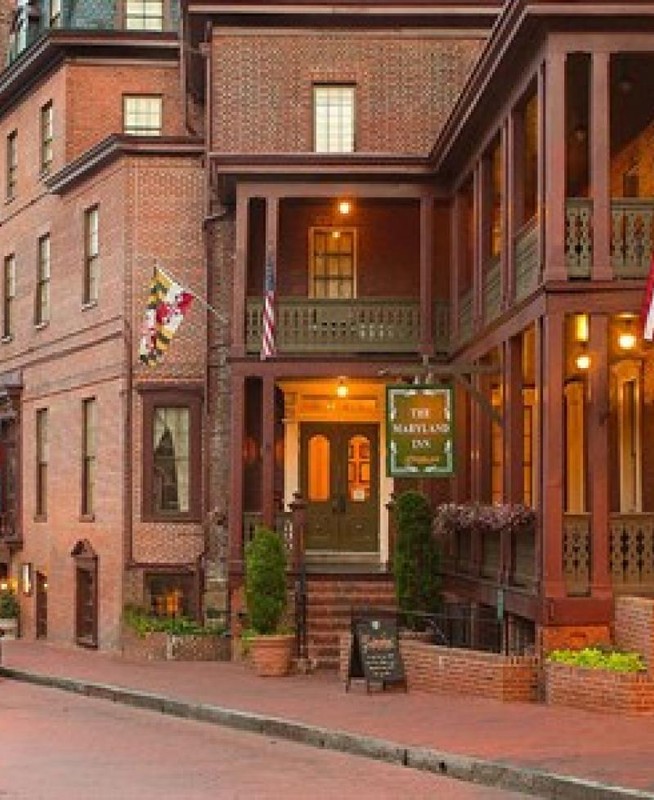
The Governor Calvert House
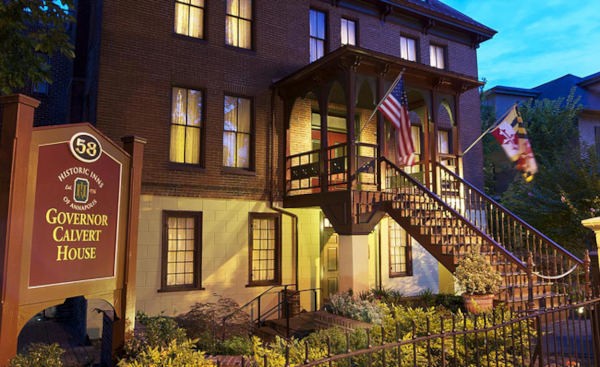
The Robert Johnson House
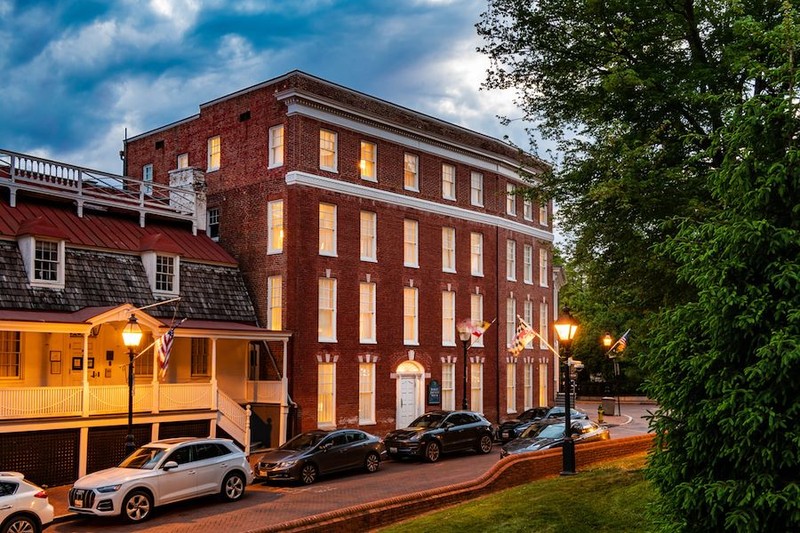
The view of downtown Annapolis from one of the historic inns.
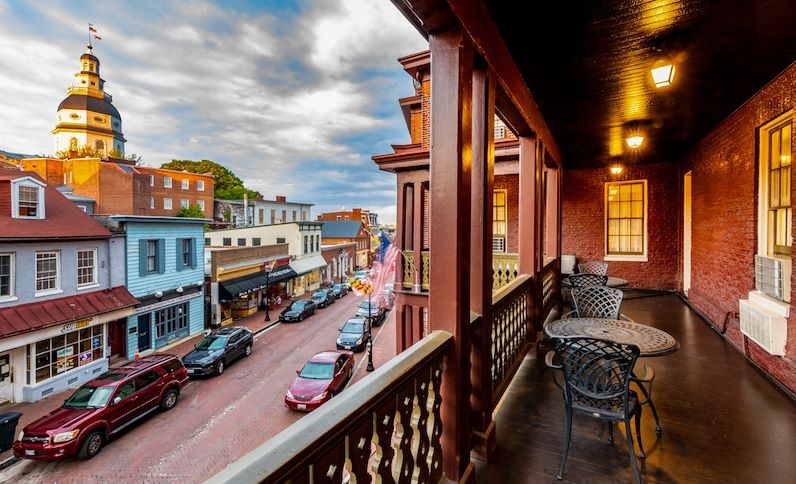
Historic Image of the Maryland Hotel, later the Maryland Inn.
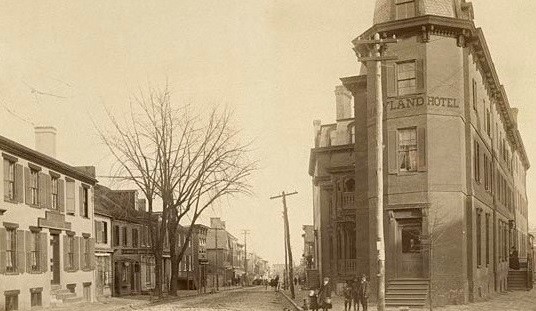
Aerial photo from the late 1880s with the Governor Calvert House shown.
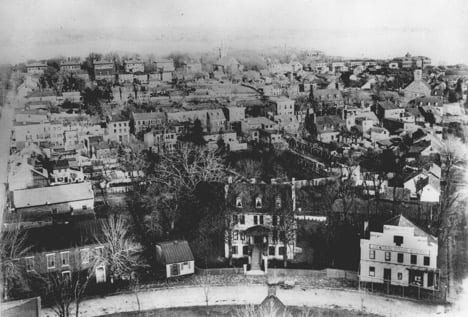
Backstory and Context
Text-to-speech Audio
The Historic Inns of Annapolis, part of the Colonial Annapolis Historic District, is comprised of three historic hotels: the Maryland Inn, Governor Calvert House, and Robert Johnson House. Each of these historic buildings has a unique character and tells a fascinating story of early American history. When George Washington resigned as Commander in Chief of the Continental Army in December 1783 and the Treaty of Paris was awaiting ratification, delegates to the Congress of Confederation lodged at the inns. At this time, Annapolis was serving as the first peacetime capital.
The Maryland Inn dates to 1772 when Thomas Hyde, a merchant and civic leader, obtained a lease on State Circle and had a portion of the Maryland Inn built. With Hyde in charge, the inn became a favorite destination for those visiting Annapolis, especially for national political figures serving in the Congress of the Confederation. Throughout the 19th century, the inn remained popular, and it was acquired by the Maryland Hotel Company in 1868. By World War I, the facilities were out of date and many of the rooms became offices and apartments. In the early 1950s, new owners took over and restored the colonial inn. Two decades later, real estate developer Paul Pearson purchased the Maryland Inn and made it one of the top holiday destinations in Annapolis. He also added the King of France Tavern, which became a top venue for jazz performances.
The Governor Calvert House began as a one-and-a-half-story building with a prominent gambrel roof. Charles Calvert, the first to reside in the house, was the Governor of Maryland from 1720 to 1727. After most of the structure was destroyed by a fire in 1764, the Calvert family moved from the area. A two-story Gregorian-style building was built from the remains and it was used by the state as barracks. In the 1850s, Annapolis’s mayor, Abram Claude, purchased the building to serve as his residence and added Victorian features. The house remained a private residence until the 1970s when Paul Pearson purchased it and made it into a boutique hotel, along with the Robert Johnson House and Maryland Inn. While working with Historic Annapolis, archeological research found features from the original structure, notably a greenhouse heating system in the basement.
The Robert Johnson House was constructed around 1773, a year after Robert Johnson, a local barber, purchased the lot. It served as a residence for the family until the 1850s when new owners moved in. William H. Belis purchased the house in 1880, and after his death, his daughter, Maud Marrow, inherited it. She also obtained two other nearby buildings on School Street and formed Marrow Apartments. The Robert Johnson House remained the Marrow Apartments until Paul Pearson purchased it, conducted renovations, and turned it into a boutique hotel.
The Historic Inns of Annapolis now maintain these three historic structures, and they offer high-quality hospitality to the thousands of guests who pass through their doors annually. The historic sites also serve as prime venues for weddings, corporate events, and other functions. The Historic Inns of Annapolis became a member of the Historic Hotels of America in 1996 and is also on the National Register of Historic Places.
Sources
Historic Inns of Annapolis, Visit Annapolis. Accessed November 17th, 2023. https://www.visitannapolis.org/listing/historic-inns-of-annapolis/40/.
Historic Inns of Annapolis, Historic Hotels of America. Accessed November 20th, 2023. https://www.historichotels.org/us/hotels-resorts/historic-inns-of-annapolis/history.php.
Adams, Steve. Historic Inns of Annapolis Celebrate 250 Years, March 24th, 2022. Accessed November 20th, 2023. https://bayweekly.com/historic-inns-of-annapolis-celebrate-250-years/.
History, Historic Inns of Annapolis. Accessed November 21st, 2023. https://www.historicinnsofannapolis.com/history.
Visit Annapolis
Visit Maryland
Haunted Rooms America
Historic Inns of Annapolis
Historic Inns of Annapolis
Historic Hotels of America
Historic Inns of Annapolis
